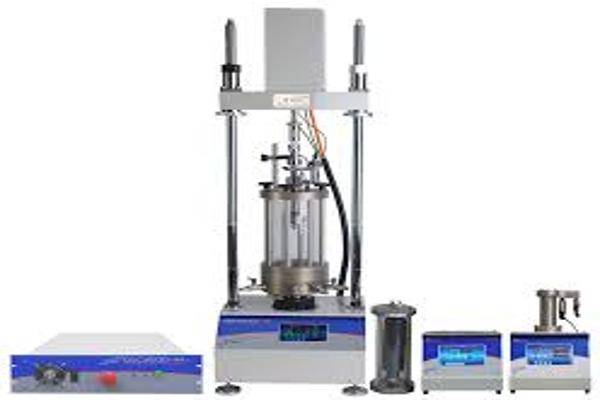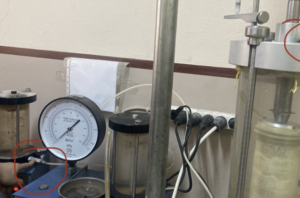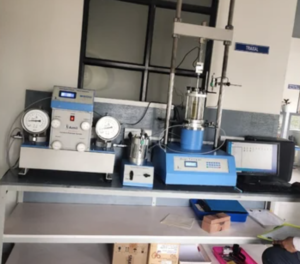How to Use Deep Learning for Triaxial Test Anomaly Detection?
Triaxial tests are critical for evaluating soil strength, deformation, and stability in geotechnical engineering. However, anomalies in test data—caused by sensor errors, sample inconsistencies, or external disturbances—can lead to inaccurate results. Deep learning (DL) provides a powerful approach for detecting and correcting these anomalies, ensuring high data integrity. This article explores how DL can be applied to anomaly detection1 in triaxial test data.
Understanding Anomalies in Triaxial Test Data
Anomalies in triaxial test data refer to unexpected deviations2 from normal stress-strain behavior, which can result from:
- Sensor Malfunctions3: Faulty LVDTs, pressure transducers, or load cells causing inconsistent readings.
- Soil Sample Irregularities4: Poor sample preparation leading to non-uniform stress distribution.
- External Disturbances: Vibrations, temperature fluctuations, or human errors during testing.
Types of Anomalies in Triaxial Testing
| Anomaly Type | Cause | Impact on Results |
|---|---|---|
| Sensor Noise | Equipment wear, electrical interference | Fluctuations in strain/stress values |
| Outliers in Stress-Strain Curve | Air pockets, sample misalignment | Inconsistent shear strength values |
| Sudden Load Drops | Platen slip, external vibrations | Incorrect failure point detection |
| Pore Pressure Anomalies | Air bubbles in sample, clogged drainage paths | Misinterpretation of soil drainage behavior |
Deep learning models can help automatically detect these anomalies, flagging erroneous data for review.

Deep Learning Techniques for Detecting Abnormal Patterns
Deep learning algorithms excel in pattern recognition and anomaly detection by learning from large datasets. The most effective techniques include:
1. Autoencoders for Anomaly Detection
- Trains on normal triaxial test data to learn expected stress-strain patterns.
- Flags deviations when test data differs significantly from trained patterns.
- Works well for real-time monitoring in laboratory and field settings.
2. Convolutional Neural Networks (CNNs) for Stress-Strain Curve Analysis
- Identifies irregularities in stress-strain curves using image-based pattern recognition.
- Detects nonlinearities and sudden stress drops that indicate errors.
- Can be used for quality control in automated triaxial testing systems.
3. Recurrent Neural Networks (RNNs) for Time-Series Analysis
- Processes real-time triaxial test data to detect fluctuations in stress, strain, and pore pressure.
- Identifies trends that deviate from expected failure behavior.
- Useful for predicting test failures before they occur.
Comparison of Deep Learning Models for Anomaly Detection
| Model Type | Best Used For | Strengths | Limitations |
|---|---|---|---|
| Autoencoder | General anomaly detection | Learns normal behavior and flags outliers | Requires a large dataset for training |
| CNN | Stress-strain curve analysis | Effective for visual pattern detection | Computationally intensive |
| RNN | Time-series monitoring | Captures anomalies over time | Can be difficult to train for long sequences |
Integrating these models into triaxial testing workflows significantly enhances error detection and data reliability.

Training Neural Networks for Reliable Anomaly Detection
To ensure accurate anomaly detection, deep learning models must be trained using high-quality triaxial test data. The key steps in training a model include:
1. Data Collection and Preprocessing
- Gather large datasets of normal and faulty triaxial test results.
- Normalize data to account for variations in test conditions.
- Remove noise from raw data before feeding it into the neural network.
2. Model Training and Optimization
- Train deep learning models on labeled datasets, marking known anomalies.
- Use cross-validation techniques to improve model robustness.
- Optimize hyperparameters to balance accuracy and computational efficiency.
3. Model Testing and Validation
- Apply the trained model to new test data and compare detected anomalies with expert-verified cases.
- Use confusion matrices and precision-recall scores to evaluate performance.
Example: Training an Autoencoder for Anomaly Detection
| Stage | Task Performed | Expected Outcome |
|---|---|---|
| Data Preprocessing | Normalize stress-strain values | Remove bias from dataset |
| Model Training | Train autoencoder on normal data | Learn expected test patterns |
| Anomaly Detection | Identify deviations in new data | Flag errors and irregularities |
| Model Validation | Compare AI results with expert reviews | Improve detection accuracy |
By following these steps, engineers can automate anomaly detection, reducing human error in triaxial test data analysis.

Enhancing Triaxial Test Data Integrity with AI
Deep learning is transforming triaxial testing data validation5 by improving the accuracy, efficiency, and reliability of geotechnical data collection. Key benefits include:
- Real-Time Anomaly Detection6: AI-driven systems can flag errors immediately, preventing flawed test results.
- Automated Data Correction: Machine learning algorithms can suggest corrections or remove erroneous data.
- Predictive Maintenance for Equipment: AI can detect sensor degradation7 before failures occur.
- Enhanced Reproducibility: AI-based quality control ensures consistent test outcomes across different laboratories.
Future Outlook: AI-Integrated Triaxial Testing Systems
| AI Feature | Impact on Triaxial Testing |
|---|---|
| Real-time anomaly detection | Prevents test failures before they occur |
| Automated stress-strain analysis | Improves data consistency |
| Predictive sensor maintenance | Reduces equipment downtime |
| AI-driven reporting | Generates automated test reports with error analysis |
As AI technology advances, fully automated triaxial testing with deep learning will become a reality, leading to more accurate, efficient, and error-free geotechnical evaluations.

Conclusion
Deep learning offers powerful solutions for detecting anomalies in triaxial test data, ensuring high accuracy and reliability in geotechnical analysis. By integrating autoencoders, CNNs, and RNNs, engineers can automate anomaly detection, reduce errors, and improve data integrity. As AI continues to evolve, real-time monitoring, predictive analytics, and automated quality control will transform the way triaxial tests are conducted, making them more efficient and error-free.
-
Exploring this resource will provide insights into various techniques and applications of anomaly detection, enhancing your understanding of the topic. ↩
-
Understanding unexpected deviations can help improve testing accuracy and reliability in geotechnical engineering. ↩
-
Exploring the impact of sensor malfunctions can enhance your knowledge of data integrity in soil testing. ↩
-
Learning about soil sample irregularities can help ensure better sample preparation and more reliable test outcomes. ↩
-
Understanding triaxial testing data validation is crucial for improving data accuracy and reliability in geotechnical projects. ↩
-
Exploring Real-Time Anomaly Detection can enhance your knowledge of immediate error detection in data collection processes. ↩
-
Learning about sensor degradation helps in proactive maintenance, ensuring the longevity and reliability of your equipment. ↩







